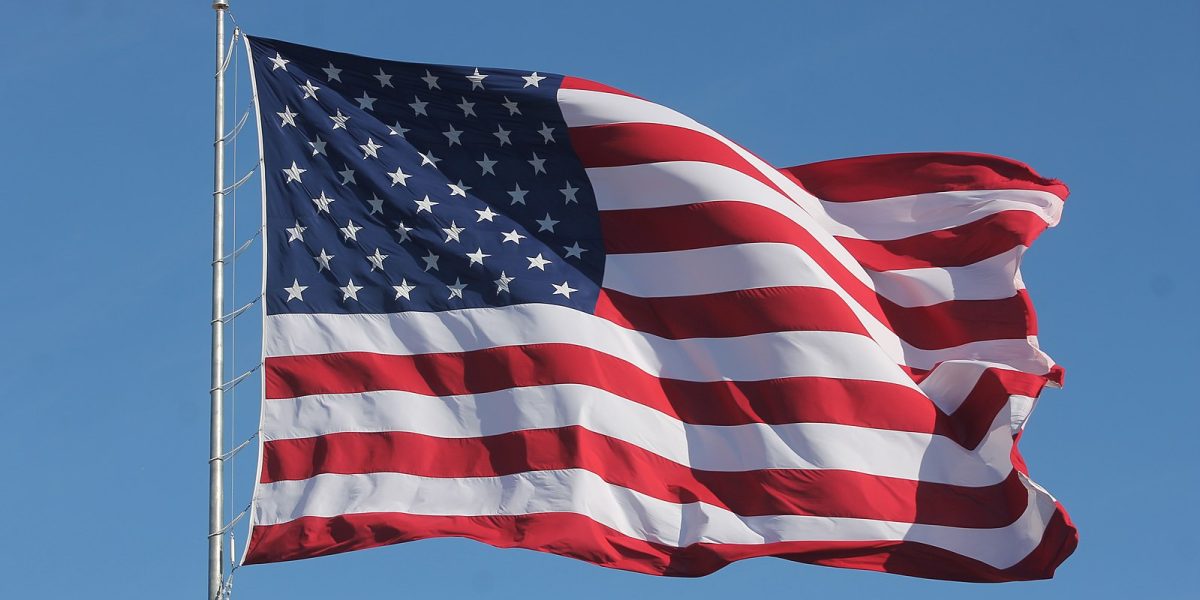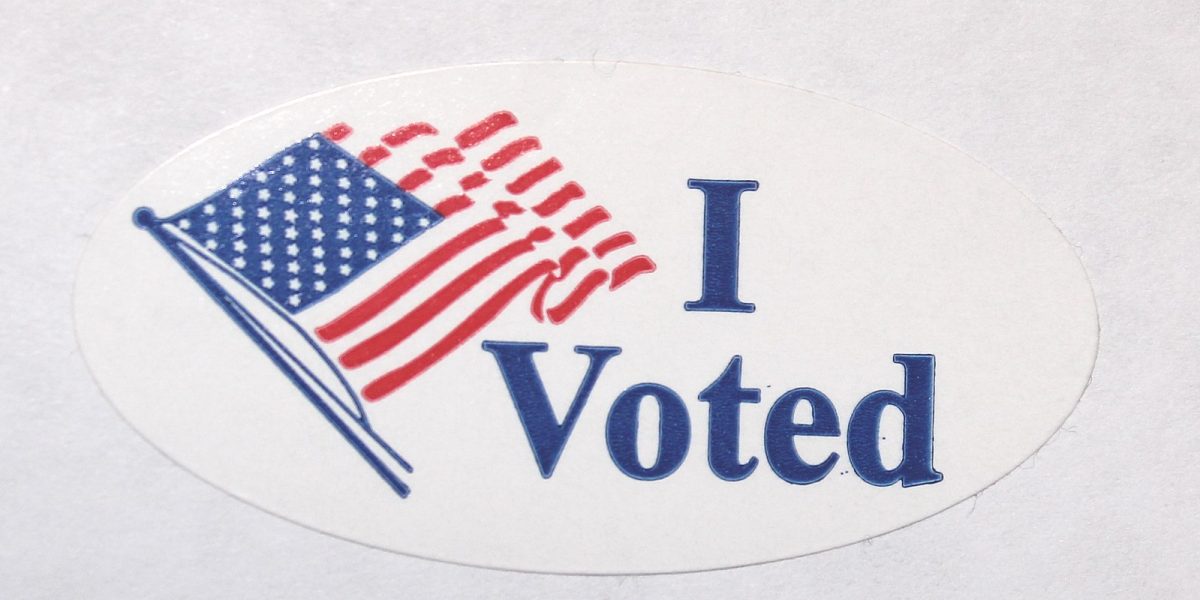Considering what constitutes the United States of America
What constitutes the American nation? As border crossings surge1, with 2023 ending with a high of nearly 250,000 U.S. Border Patrol-Migrant encounters at the southern border in December of 2023, and political rhetoric heating up between Biden and Trump in anticipation of their impending presidential face-off, the question of how one ought to define a nation-state looms large in the minds of many Americans. While nearly all Americans2 identify the number of migrants seeking to enter the United States from the Mexico border as either a crisis (45%) or a major problem (32%), President Biden calls3 for foreign nationals to “immediately surge to the border” and states that the United States’ absorption of mass migrants and refugees is “who we are.” It is worthwhile to ask: who are we, as the American nation? And how could an unprecedented level of immigration change our answer? An America which refuses to acknowledge that she possesses specific historical and cultural components and struggles to address large-scale illegal immigration, reveals the pressing importance of the development of a shared self-understanding and local interconnectedness to the survival of the United States.
Ancient writers and accounts have much to offer on the topic of national borders and patriotic identity. Plutarch’s biography of Lycurgus, the great lawgiver and leader of Sparta, in The Parallel Lives reveals the centrality of united community and economic components of the state as intimately tied to its citizens’ habituation in virtue. In a radical and somewhat fictitious account of unity and clarity of intention, Lycurgus founds and rules the Spartan state with a defined idea of who his people ought to be. In this partially legendary account, Lycurgus abolishes all traditional currency, equally redistributes land, limits trade and immigration, and forms the Spartan citizenry into an elite fighting force. His policies, although extreme, and in tension with liberal notions of limitless self-determination, reveal a deeper goal of the state: to form its citizens as “integral parts of the whole community…almost beside themselves with enthusiasm and noble ambition, and to belong wholly to their country.” It is not clear that the modern American would identify feeling “beside themselves with enthusiasm and noble ambition,” as a part of the current political ideal. As only 16% of Americans4 report being very attached to their local community, it becomes nearly impossible for citizens to experience a deep feeling of responsibility for their nation.
In Plutarch’s account of the ancient Spartan state, the appeal of political harmony was so strong as to supersede inconveniences or the human push towards individuality. Patriotic ties towards one’s nation, call forward “an indefinable and special emotion, which nothing modern can possibly arouse,” as Swiss political philosopher Benjamin Constant expressed in his famous 1816 essay, “The Liberty of the Ancients Compared with That of the Moderns.” Lycurgus outlawed international markets not due to a fear of invasion, but due to his understanding that, “For along with strange people, strange doctrines must also come in; and novel doctrines bring novel decisions, from which there must arise many feelings and resolutions which destroy the harmony of the existing political order.” The notion of a protective orientation towards immigration is foreign to modern political rhetoric. The defense of the “harmony of the existing political order,” requires the acknowledgement that the maintenance of the political order is the central goal of the government.
Lycurgus’s reforms display that essential to any national identity is the willingness of the populace to sacrifice themselves out of a love of neighbor and country. In order for America to survive, one must first acknowledge that there is a particular definition of the American way of life and it is good. The very fact that the nation of the United States of America exists necessitates that there are some things which America is and some which it is not. American citizens must buy-in to a similar notion of values, history, laws, and interpersonal commitments. These objective standards must rest upon the country’s Judeo-Christian founding, traditions of personal rights, and the common good. The relativistic desire to identify America exclusively as a mixture of standards and values fundamentally confuses the American project of republican government into a post-modern, post-Christian project of contradictions. In order to begin to clarify American identity, citizens must assent to standards such as equality under the law and the fomentation of virtues which allow for the proper usage of liberty–not to the destructive rhetoric of identity conflict which holds that “America” does not means much of anything besides a system of oppression.
Interestingly, a traditional notion of national identity has recently been communicated by an unexpected source—Democratic Congresswoman Ilhan Omar of Minnesota. In a speech delivered in the Somali language in early February 2024, Congresswoman Omar spoke to her constituents about national identity and patriotism. The speech’s translation is disputed, with the conservative Heritage Foundation reporting5 on her as saying, “Somalia belongs to Somalis—it is unified, and we are all brothers” and the progressive Minnesota Reformer writing6 that her words were, “we are also people who can rely on each other. We are people who are siblings. We are people with courage. We are people who know that they are Somali and Muslim. We are people who support each other.” Either translation expresses a powerful patriotic sentiment, a call for Somali unity and support, and a clear definition of who Somalis are. And yet, Congresswoman Omar serves in the House of Representatives of the United States of America, not of Somalia. Her speech, widely criticized by Republicans and defended by Democrats as an example of intersectionality, is actually an exemplification of what it means to truly belong to a nation.
In Omar’s case, her patriotic message focuses upon the Somali nation, which the naturalization oath had bound her to “absolutely and entirely renounce and abjure all allegiance and fidelity” to. That a member of the American congress would feel comfortable communicating such a message about another nation highlights the confusion surrounding American self-identity. This contradiction is the natural outcome of a culture which has condemned American cultural and social standards as oppressive. It is an interesting situation in which the desire to affirm that the United States’ only defining characteristic as its lack of objective values has allowed for other identities–racial, ethnic, or multinational–to secure prominent positions in American self-understanding.
Regardless of questions raised surrounding Omar’s American identity, it remains obvious that many American citizens long to hear their leaders proclaim a similar sentiment: “America belongs to Americans–it is unified and we are all brothers.” This deep desire to belong within one’s home is an inherent part of human nature, and is not founded upon fear or hatred of the other. Instead of a xenophobic or hateful foundation, patriotism is traditionally understood as man’s desire to come home–as Odysseus longs to return to Ithaka or Aeneas searches for a homeland for his descendants–and as pride in the civilization to which each man and woman belongs. An understanding of home is particularly important in the nation which welcomes the “huddled masses” of Lazarus’s Great Colossus; therefore, attitudes toward mass immigration must be informed by the need for a unified American identity.
Beyond the first step in recognizing and embracing that being American means assenting to certain principles and rejecting others–immigration processes must ensure that these standards are communicated and accepted. This is simply impossible to ensure when the United States is facing such record high entries at the Southern border. In documents sent to Congress from Homeland Security, the federal government projects7 that the “non-detained docket,” or migrants without official legal status, is projected to have hit eight million by October 2023. The sheer volume of migrants is staggering–although President Biden had promised8 to effectively “absorb” asylum seekers during his 2020 campaign. This absorption has proved to be more difficult than anticipated, and it is impossible to thoroughly vet individuals when the Border Patrol is facing up to a quarter of a million encounters within a single month. The situation at the Southern border is distinct from any other migration to the United States, which has historically welcomed and been benefited by diverse immigration. Immigration undoubtedly plays an important role in the United States’ economic and social development. In order to address the immigration crisis, the government must recognize its role as the protector of political harmony, and acknowledge a responsibility to both migrants and citizens–lack of documentation leaves immigrants at risk of labor exploitation and trafficking9.
America is a nation founded upon an ambitious program of self-government, individual rights, and an orientation towards a national common good. Any meaningful notion of American identity rests upon her citizens’ ability to recognize foundational. American ideals as historic, objective, and central to their own understanding of themselves. Rhetoric which pushes a vision of the United States as a mere amalgamation of subjective multiculturalism, and welcomes mass illegal migration, welcomes dangerous ideological confusion: confusion in which an American Congresswoman extols the patriotism of another nation, confusion in which 8 million undocumented and vulnerable individuals are practically impossible to identify or contact, and confusion in which a record low10 Americans are proud of their nation. If Americans wish to preserve their nation, they must not fear defining both their ideological and geographical borders.
Notes
*Headline picture “American Flag Waving on a Flag Pole” is licensed under the Creative Commons Attribution-Share Alike 4.0 International license.
- Gramlich, John. “Migrant Encounters at the U.S.-Mexico Border Hit a Record High at the End of 2023.” Pew Research Center, https://www.pewresearch.org/short-reads/2024/02/15/migrant-encounters-at-the-us-mexico-border-hit-a-record-high-at-the-end-of-2023/. ↩︎
- Center, Pew Research. “1. How Americans View the U.S.-Mexico Border Situation and the Government’s Handling of the Issue.” Pew Research Center – U.S. Politics & Policy, 15 Feb. 2024, https://www.pewresearch.org/politics/2024/02/15/how-americans-view-the-u-s-mexico-border-situation-and-the-governments-handling-of-the-issue/. ↩︎
- Speaker Kevin McCarthy. Candidate Biden Calls On Illegal Immigrants to Surge the Border. 2021. YouTube, https://www.youtube.com/watch?v=rYwLYMPLYbo. ↩︎
- Mitchell, Travis. “5. Americans’ Satisfaction with and Attachment to Their Communities.” Pew Research Center’s Social & Demographic Trends Project, 22 May 2018, https://www.pewresearch.org/social-trends/2018/05/22/americans-satisfaction-with-and-attachment-to-their-communities/. ↩︎
- Gonzalez, Mike. “Ilhan Omar Brags About Advancing a Somalia First Agenda in Congress.” The Heritage Foundation, https://www.heritage.org/progressivism/commentary/ilhan-omar-brags-about-advancing-somalia-first-agenda-congress. ↩︎
- Nesterak, J. Patrick Coolican, Max. “Republicans Smeared Ilhan Omar over a Faulty Translation. Here’s What She Really Said. .” Minnesota Reformer, 1 Feb. 2024, https://minnesotareformer.com/2024/02/01/republicans-smeared-ilhan-omar-over-a-faulty-translation-heres-what-she-really-said/. * ↩︎
- Kight, Stef. “Scoop: Migrant Backlog to Hit 8 Million under Biden by October, Data Reveal.” Axious, 2 Mar. 2024, https://www.axios.com/2024/03/02/data-biden-border-crisis-immigration-8-million-detention. ↩︎
- Steck, Andrew Kaczynski, Em. “Joe Biden Promised to ‘Absorb’ 2 Million Asylum Seekers ‘in a Heartbeat’ in 2019 – He Now Faces an Immigration Crisis.” CNN, 7 Mar. 2024, https://www.cnn.com/2024/03/07/politics/kfile-biden-2-million-migrants-asylum-seekers-immigration-crisis/index.html. ↩︎
- Finckenauer, James, and Jennifer Schrock. Human Trafficking: A Growing Criminal Market in the U.S. . International Center of the National Institute of Justice , 2001, https://www.ojp.gov/ncjrs/virtual-library/abstracts/human-trafficking-growing-criminal-market-us. ↩︎
- Megan, Brenan. “Record-Low 38% Extremely Proud to Be American.” Gallup, Inc., 29 June 2022, https://news.gallup.com/poll/394202/record-low-extremely-proud-american.aspx. ↩︎


